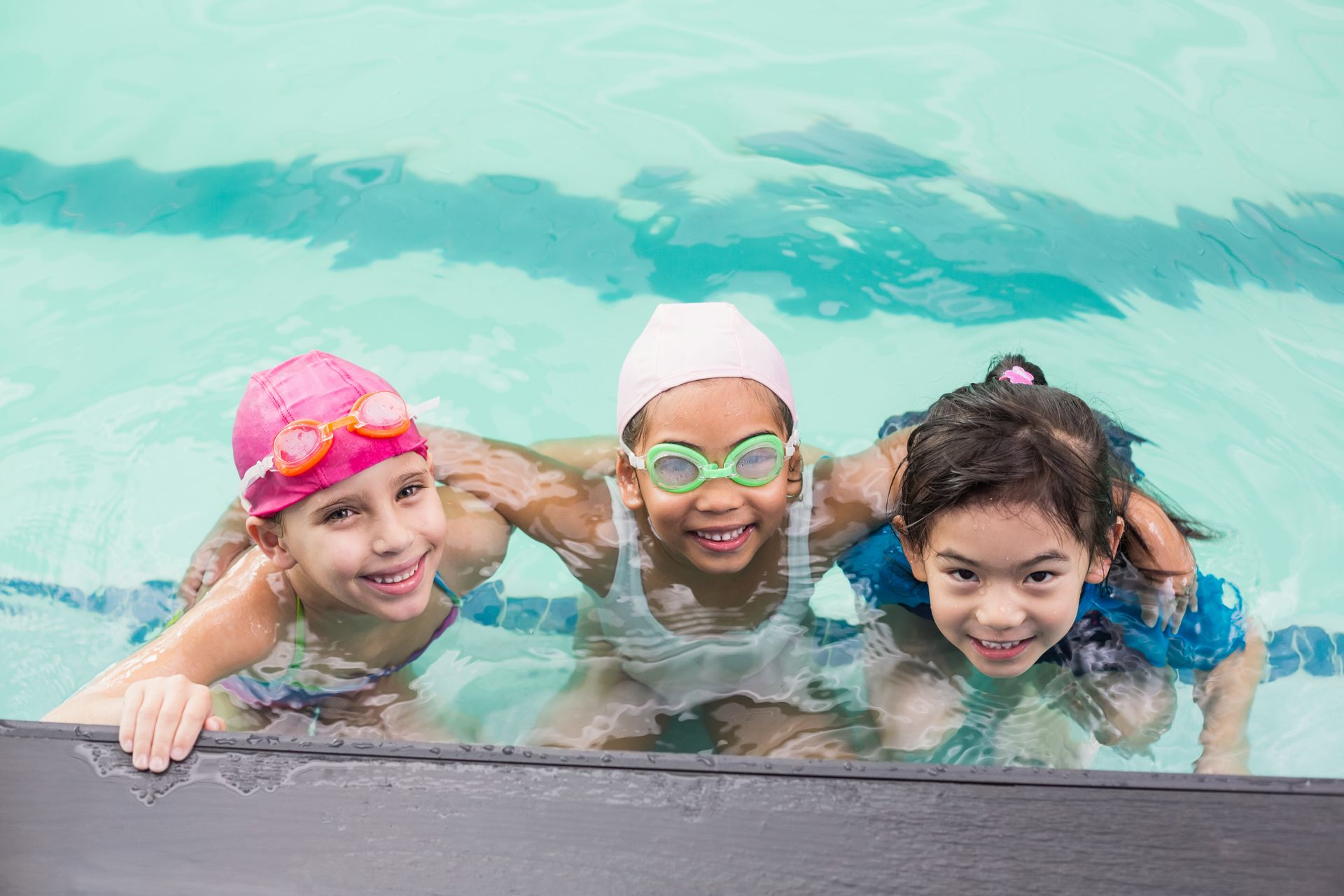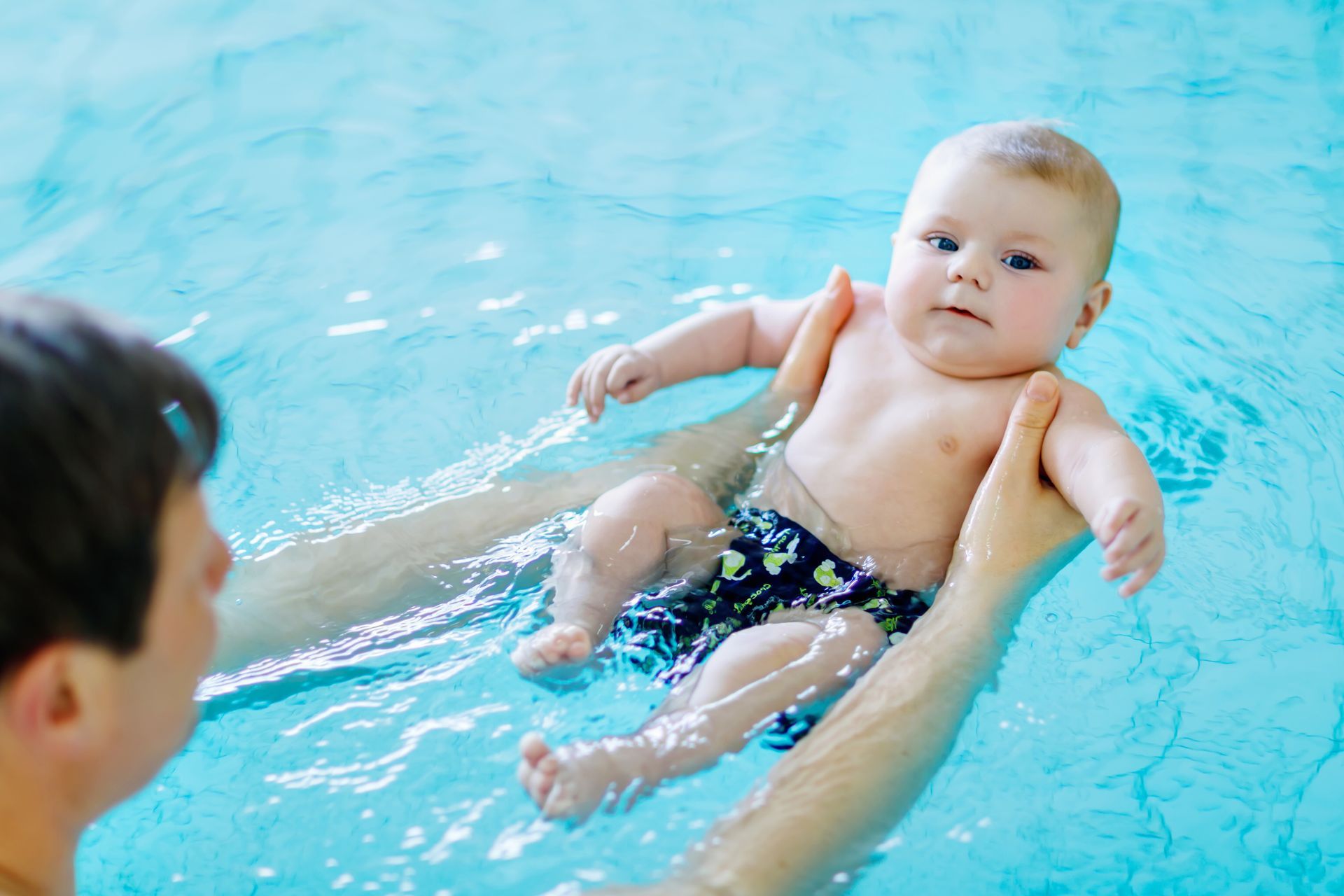As a swim school owner, I am constantly being asked questions about ear infections and ear tubes as they relate to swimming. As someone that has had many kids swim with us that have ear tubes, I hope my information in this blog helps to answer some of the questions you may have.
There are two types of ear infections, inner and outer. The outer ear infection is commonly called “swimmer’s ear”, and is similar to a fungus infection. The cause of swimmer’s ear can be a combination of factors: warm or humid air, warm water, length of time spent swimming, the natural enzymatic activity in the ear canal, and the presence of bacteria. It’s more likely to happen in a bathtub when shampoo ends up in your ear canal and sits there. You will know if you or your child has swimmer’s ear because the doctor will give you external drops which can also be bought over the counter. Please note, swimmer’s ear is not easily contracted in a properly chlorinated pool.
A middle/inner ear infection often occurs in young children. It usually is a result of a cold or throat infection that travels up the Eustachian tube into the moist air pocket behind the ear drum. If the Eustachian tube is not working properly or is blocked by inflammation, the air in the middle ear is absorbed but cannot be replaced. This causes the air pressure in the inner ear to be less than the air pressure in the ear canal. The negative pressure in the middle ear causes fluid to collect there and gets clogged. Young children are more prone to this infection because their Eustachian tubes are shorter and straighter than adults and provide a super highway for bacteria. As the child grows, the angle of the tube changes and the infection has less of a chance surviving and getting to the ear. Tubes often get clogged because of teething or a cold. You will be able to spot the common symptoms which include fever, irritability, and ear discharge. In the case of an inner ear infection, you will be given antibiotics which will in most cases cure the infection.
Children with chronic ear infections sometimes have a procedure called myringotomy, or tympanotomy, performed. This is commonly known as getting an “ear tube”. The process involves making an incision in the eardrum to help drain fluid and allow an exchange of air between the middle and outer ear. Tubes, or grommets, are inserted in the incision to maintain the opening. It has often been assumed that because of this opening, children with tubes should not be allowed to swim or shower. This is untrue, and not one clinical study has shown results that indicate that swimming with tubes is harmful. Both of my kids have had ear tubes inserted because of chronic inner ear infections that could not be cured by oral antibiotics, and have enjoyed swimming throughout their life. Most ear, nose, and throat specialists support swimming while tubes are in as long the ears are protected. During normal swimming, there is seldom enough water pressure to force water through the tube.
Here at Small Fish Big Fish, we have chemically treated water which kills all bacteria, making sure that chances of contracting an outer ear infection are very low. We also use an ultraviolet light that shines throughout the water, and this is used as a secondary disinfectant measure. To date, we have never had a single documented case of a child contracting an ear infection at our school.
The takeaway from this blog should be that outer ear infections are caused by a fungus or bacteria, and can be cleared by using over the counter drops. Inner ear infections are caused when the inner ear tubes are unable to drain, and infection forms. In this case, antibiotics will be given. For those with ear tubes, Small Fish Big Fish Swim School is a safe environment to swim in, as many students have them, including my own children. I am always available to answer any questions you may have about ear infections, ear tubes, or anything else.
Swimmingly,
Melissa







